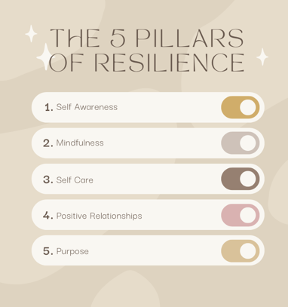
It can be difficult to completely eliminate stress and pressure in the modern workplace. Businesses must work hard to stay relevant and competitive in a changing world. This creates a fast-paced work environment where employees work hard to achieve ambitious business goals.
Some employees may thrive in this environment, but it’s still important to master resilience training. With resilience training, you can boost workplace productivity and reduce stress and pressure.
What is Resilience Training?
Resilience training is the process through which we learn how to handle tough situations. A tough situation could be a new hire struggling to learn how to control remote devices at a new job. Resilience teaches us to overcome such obstacles and solve problems rationally. It also looks at how we think.
Our resilience depends on how we handle threats, trauma, change, and pressure. This often means finding a calm, creative way to approach issues. For instance, a call center might need to display resilience to deal with a sudden downturn in revenue. Resilience in this case could mean avoiding panic and exploring new call center retention strategies or alternate revenue sources.
The 5 Pillars of Resilience
Keep these five pillars in mind when putting together a resilience program for your staff.

- Self Awareness: Everyone has different things that set them off. People need to understand their reactions to different situations to prepare for any possible stressors and find a way to deal with them
- Mindfulness: Mindfulness means being aware of what you think and how you feel. Mindfulness exercises like meditation, yoga, and even breathing techniques can help people deal with pressure and stress
- Self Care: This is essential because we often don’t take good care of our physical and mental health. Self-care includes healthy habits like working out regularly, eating a balanced diet, and getting enough sleep
- Positive Relationships: It’s important to have a strong network of helpful people at work and outside work. They can give you good advice and allow you to share your problems
- Purpose: A strong sense of purpose gives you direction and drive. No matter what it is, having a purpose will help you stay on track and build resilience
Why Invest in Resilience Training?
Here are some of the potential benefits of training for resilience.
- It boosts productivity: When we work to improve our resilience, we get better at setting priorities and dealing with problems. We are better at switching between tasks, staying calm in difficult situations, and finding solutions
- It makes employees more adaptable: Change can be stressful, but it doesn’t have to be. When you master resilience training, you teach employees to see change as an opportunity that can be beneficial instead of a threat or problem that they can’t solve
How to Master Resilience Training and Implementation in the Workplace
Your efforts to master resilience training should be an ongoing cycle. You must give your workers the tools they need to build on their strengths over time.
Follow these tips to master resilience training in the workplace.
Make resilience training a company policy
Add a section to your company’s policy about resilience training to make sure everyone knows how important it is. Improve the employee experience by creating game rooms, quiet areas for alone time and meditation, or a gym. Transform your offices into a place where employees can relax and unwind in whatever way works best for them.
Get the support of leaders

This is the key to implementing change in any organization. When leaders take their own advice, it gives employees something to look up to. By ensuring that leadership masters resilience training, follows its principles, and encourages the same in others, you will speed up its adoption.
Integrate resilience into daily tasks
Don’t reserve resilience-building techniques for big occasions alone. Encourage employees to apply it every day to the small tasks, activities, and decisions they make. That’s how you can truly master resilience training.
It could be as simple as taking regular breaks and using calming breathing exercises when stressed. Another slightly more complex example could be a manager applying positive thinking and behavior to important tasks, like conducting quality assurance for call center.
Encourage mindfulness
Encourage the use of guided mindfulness meditation recordings or apps to help employees stay focused. Practicing mindfulness means focusing on the present and avoiding judgment. It can help reduce stress, improve concentration, and enhance overall well-being.
Show employees that you care
Your employees need to know why you want to make them more resilient. And it shouldn’t be simply to get them to work harder. Productivity shouldn’t be the only goal of your campaign to master resilience training; it should be an added bonus. Your employees need to know that you care about their well-being.
Offer a wellness program
Putting together a wellness program for your employees is one of the best ways to master resilience training. A program that benefits their physical, mental, and emotional health can make it easier for them to deal with stress and anxiety. Examples are gym memberships or even basic team activities that encourage them to live a balanced life.
Hire a resilience expert

Hiring a resilience consultant is a great way to help your organization master resilience training. Work closely with the resilience expert and create a training plan tailored to your employees’ needs. Collect feedback on the training from employees to measure its effectiveness.
Provide resilience courses and resources
Stress management courses teach workers how to handle stress. They can also provide tips on how to stay focused and get things done when things aren’t going their way.
Consider offering the following learning formats to allow employees to use their preferred choice:
- In-person workshops or seminars
- Online courses with video lectures, interactive quizzes, and discussion forums
- Webinars and virtual training sessions
- Printed materials, workbooks, or digital resources
Note that tools like AI for transcription can automatically transcribe audio recordings from resilience workshops and courses. This makes it easier for employees to review key insights from the training and integrate them into their daily practices.
You can even create and sell online courses on resilience training to make it accessible to a wider audience, expanding the reach of your resilience initiatives. This can be an excellent way to share your expertise and contribute to the broader understanding of resilience in various settings.
Also, leverage advanced tools, such as a recruitment management system. By integrating resilience-focused criteria into the system, you can ensure that new hires have the qualities they need. This ultimately contributes to the overall success of your resilience training initiatives.
Optimize Your Workplace With Resilience Training
A workplace that helps employees feel more resilient clearly cares about their physical and mental health. However, remember that training for resilience requires strong leadership and the right approach and tools.
Consider data lake best practice examples to analyze and interpret employee feedback, engagement metrics, and stress indicators to tailor their resilience training programs. To master resilience training, you must ensure that your employees have enough support.




